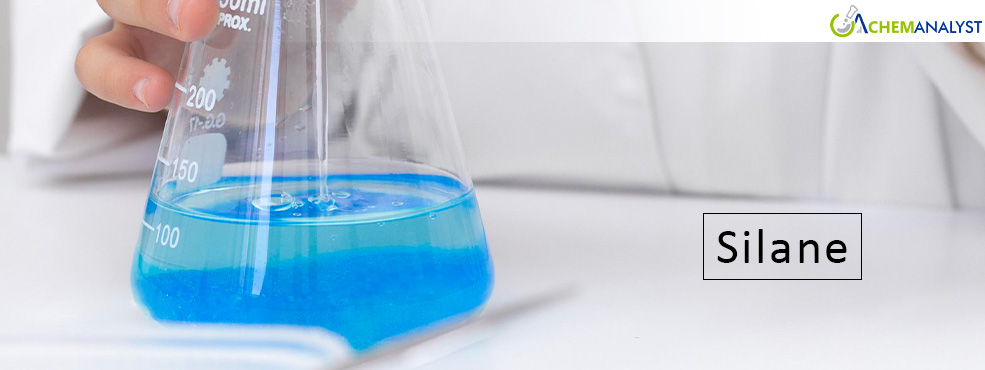Global Silane Prices Set to Climb Amid China’s Domestic Boom and Trade Shifts
- 17-Apr-2025 8:30 PM
- Journalist: Shiba Teramoto
Global Silane prices are anticipated to rise in April 2025, primarily driven by surging domestic demand in China and evolving supply-side dynamics. The primary semiconductor and photovoltaic industries, which are expanding rapidly in China, are key drivers behind the increasing requirement for high-purity electronic-grade gases such as Silane. A major contributor to this trend is the launch of the Hubei Shenghao electronic-grade Silane gas project. Developed by China National Chemical Engineering Third Construction Co., Ltd., the facility has a design capacity of 15,000 tons per year and represents a milestone in overcoming domestic technological bottlenecks in advanced materials manufacturing.
Once operational, the plant will become China’s first and the world’s third largest high-purity Silane production unit, expected to meet over 75 percent of domestic demand. It will supply leading semiconductor and solar technology companies such as Yangtze Memory Technologies, SMIC, Longi, and Tongwei. The project is anticipated to generate an annual output value exceeding 5 billion yuan and contribute significantly to the formation of a regional electronic materials industrial cluster. Mechanical completion was finalized by the end of 2024, with final approval pending from the Guixi Ecological Environment Bureau in Yingtan City.
The facility will serve not only core semiconductor applications but also advanced processes like atomic layer deposition (ALD) and thin-film formation, which are increasingly adopted across East China’s high-tech manufacturing zones. Areas such as Hefei’s Xinzhan High-tech Zone are set to benefit directly, with high-purity Silane services being provided to fabs, R&D centers, and industrial clients. This will bolster domestic Silane consumption and support China’s broader industrial upgrading goals.
On the global front, the redirection of Chinese Silane output to serve local demand is expected to tighten international supply. In the coating-grade Silane segment, export volumes have already been reduced. Additionally, geopolitical factors are impacting market access. On April 15, 2025, the U.S. government announced tariffs of up to 245 percent on several Chinese imports, including Silane and other specialty chemicals. This move, part of a broader strategy to rebalance trade relations, has led U.S. buyers to reassess their sourcing strategies, resulting in many US suppliers to potentially considering Europe as another market to import Silane.
With Chinese-origin Silane facing heavy duties the recent announcement of import tariffs up to 245%, U.S. importers are increasingly turning to European suppliers to diversify procurement and mitigate cost escalation. However, the European market provides only a limited upside. While Silane prices in Europe are showing signs of recovery, the scale of gains is expected to remain moderate due to persistently weak demand and the continued circulation of low-cost inventories imported from Asia in previous quarters.
European producers have maintained controlled production through Q1 2025, with no major outages or logistical constraints reported. Moreover, macroeconomic challenges continue to weigh on sentiment. Consumer confidence across the Eurozone fell to -14.5 in March 2025, reflecting broader economic uncertainty, which in turn is dampening downstream demand for specialty gases, including electronics and coating.
In conclusion, the global Silane market is entering a phase of price firming, supported by strong Chinese demand and constrained international supply. Tariff measures and realigned trade flows will likely reinforce upward pressure on prices outside Europe. However, the European market is expected to remain relatively stable in the near term due to subdued consumption and sufficient inventory levels. Market participants should monitor developments in Chinese supply capacity, trade regulations, and regional demand trends to navigate procurement and pricing strategies effectively.



